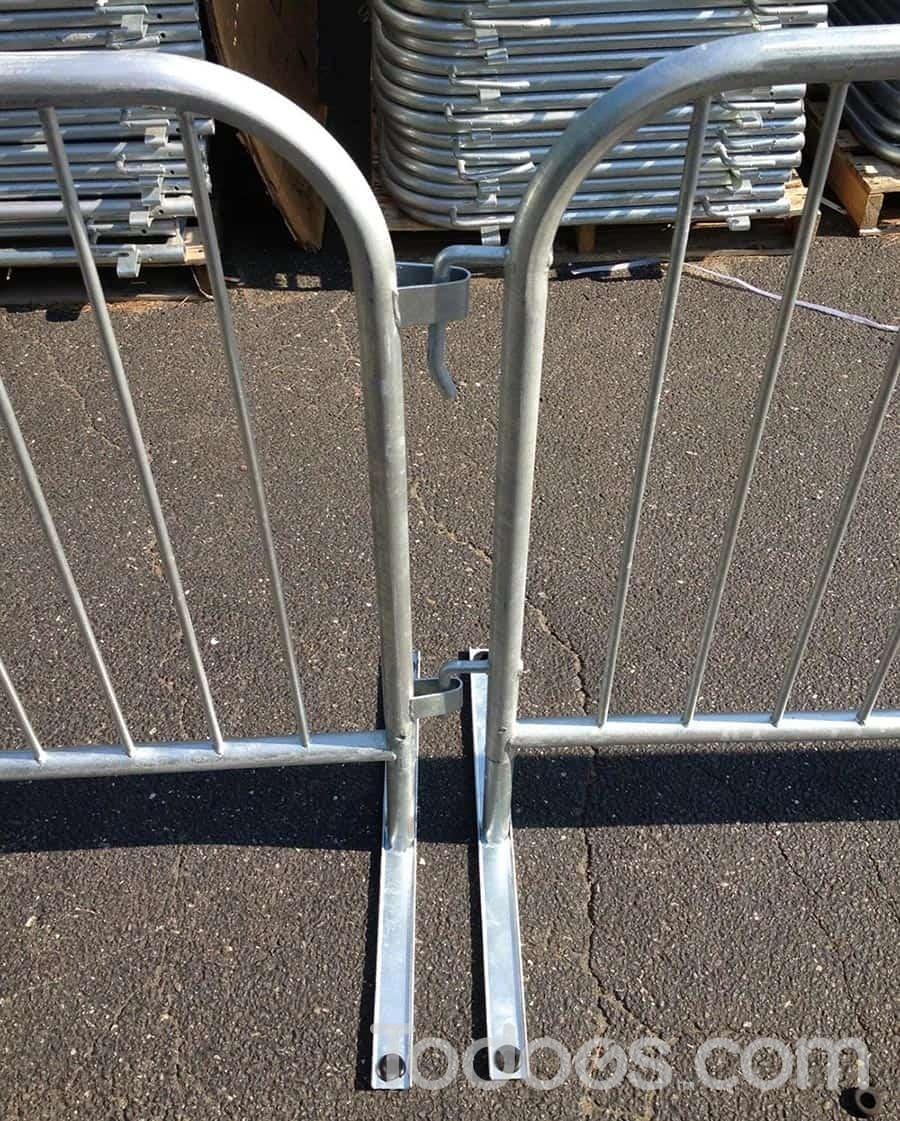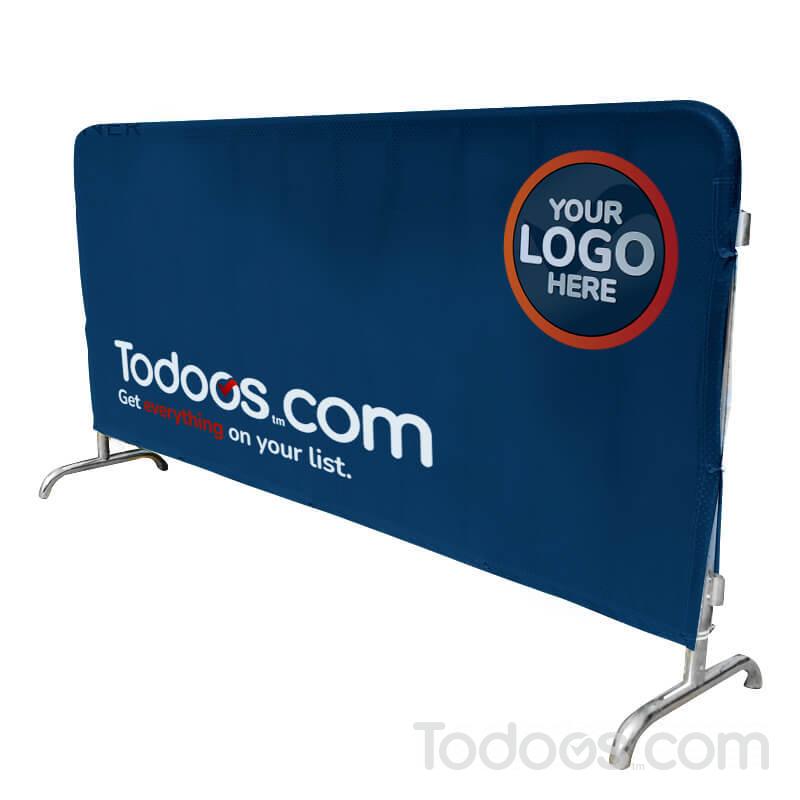Steel Barriers | 9 Benefits of using Interlocking Steel Barriers!
Steel barriers have been in use for well over the last century to manage the movement of people, traffic, and even animals. The original concept for interlocking steel barriers was patented in France in the early 1950s and produced by Samia SA.
Initial steel barriers with simple straight hooks (essentially metal hooks that connected to a receiver at a 45-degree angle) would stay “locked” if they were pushed or moved horizontally (for example, left to right), but not if they were lifted up. This was the problem presented as there was a correlation between the diameter of the male hook and the female receiver. If the receiver is too small, it will not allow the connection. If it is too large, the hook will be able to be lifted out.
The male hook should be a 5/8 inch steel rod with an angled 30-degree tip that is welded to frame at both ends – Female receptor must be 3/16 by 1.5-inch steel plate welded to frame on both outer sides. In the current market, many barriers are produced without true interlocking capability.
The objective was to make two crowd control barriers connect in such a way that, in a line, no single barrier could be removed from the line.
Samia accomplished this with a bend in the top male hook, which would enter a female receiver at an angle of about 30 degrees. Thus, when the frame was straightened, the “tip bend” would not have space to be pulled out.
There is a correlation between the diameter of the male hook and the female receiver. If the receiver is too small, it will not allow the connection. If it is too large, the hook will be able to be lifted out.
The male hook should be a 5/8 inch steel rod with an angled 30-degree tip that is welded to frame at both ends – Female receptor must be 3/16 by 1.5-inch steel plate welded to frame on both outer sides.
In the current market, many barriers are produced without true interlocking capability. There is the misconception that if barricades can simply hook together, that is usually “good enough.” This overlooks serious and potentially dangerous scenarios when barricades must interlock to maintain safety and order.
How can you tell if a steel barrier is truly interlocking? You must ask about the hook!

Below we share 9 advantages of the Interlocking mechanism in the steel barriers.
- Strength and Durability: The steel that is used in manufacturing the base and the frames of the barricades is 16 gauge. It is very durable and can withstand a lot of adverse conditions. The tubing is strong enough to hold a huge crowd or vehicular traffic and any high pressure in case there is an overflow of the crowd. The stronger steel prevents deterioration or damage to the barricade without adding any excess weight.
- Longer lasting hooks: The male hooks are inserted into the frames of the barricades and welded at both ends to give extra strength which makes them last longer than those that are welded at only one end. The hooks form one of the most important parts of the interlocking mechanism of the barriers and have to be extremely strong so that they are able to hold the entire structure of the barricades together. The double-sided welding provides necessary additional support to the steel barriers.
- Superior welding technique yielding a lower probability of breakage: The vertical bars that are present on the barricades are first inserted into the frames and then welded. This technique is far better than the spot welding that is done in certain barricades. If the uprights are just spot welded there is a higher probability of their breakage compared to those that are welded before inserting.
- Galvanization process for longevity: The steel used in the manufacturing of the barricades is subjected to a process called hot-dip galvanizing. Hot-dip galvanizing is a process in which the steel is covered with a protective sheath that helps in the prevention of any external corrosive elements to cause any damage to the underlying steel. This increases the life of your steel barriers and enables them to withstand a great deal of pressure. It also prevents it from getting rusted. Normal barriers which are simply painted will not last as long and will eventually rust.
- Removable bases for easy replacement: The bases of the barricades are attached to the unit by means of a bolt and nut. This facilitates easy replacement of the base of the barricade. If the landscape where the barricade has to be used changes, all that has to be done is unscrew the bolt and nut and replace it with a suitable base and we can accommodate any change in the land surface without being concerned about getting a new barricade altogether. This proves to be extremely handy when on the spot decisions have to be made and it is also very cost-effective.
- Powerful Advertising Medium: The interlocking steel barriers can be used for advertising purposes. To facilitate this, the holes are drilled in the uprights before the hot-dip galvanizing process, making them very sturdy. Signs can be easily attached to the barricades without having to do any drilling into the barrier structure. The holes are provided in such a way that a variety of signs and barrier jackets that are appropriate for the event can be used on the steel barricades. This maintains effective inventory control and makes sure that nothing is out of place during the actual event.

- Positive interlock to maintain the barriers in place: The male hooks have a 30-degree bend created in them so that there is a positive interlocking between the steel barriers. This makes the interlocking very strong and helps in the prevention of the disengagement of any of the interlocked barriers. The positive interlocking mechanism is responsible for keeping all the barriers interlocked and in place without the possibility of any rearrangement during the event.
- Saddle-Cut Welding for high endurance: All the welds that are made make use of the saddle-cut welding technique. This technique is proven to be much longer-lasting compared to the spot welding technique.
- Support for interlocking in various angles: The interlocking is provided in such a way that even when the steel barriers are interlocked at right angles, all four of the base points will always touch the ground. This provides more stability to the barricades preventing them from falling over.


